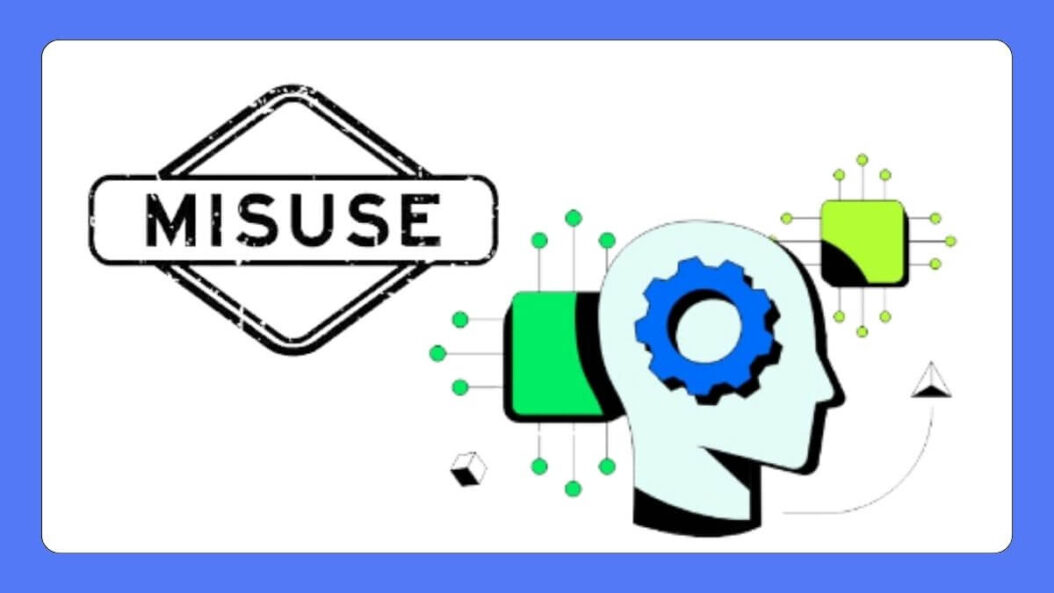In recent years, AI capabilities have expanded rapidly, allowing systems to generate increasingly realistic and diverse images, text, audio and more. However, some have begun misusing these technologies to create inappropriate, unethical and potentially dangerous content. In this article, we will explore examples of AI systems that have questionable real-world applications, the risks they create, and recommendations for using AI more responsibly. Our goal is not to provide recommendations for utilizing unethical systems, but to have an earnest conversation about AI safety.

Inappropriate AI Image Generators
Some AI image generators have been used to create fake n***de photos or videos of people without consent. For example:
Clothoff.io
This site claimed to use AI to digitally remove clothing from photos of clothed women. It raised legal issues and ethical concerns around deepfakes and nonconsensual image generation. Other sites generate similar n***de images via AI that falsely depict real people. While their creators may claim it’s just technology experimentation, such applications enable harassment, defamation and other societal dangers.
Deepfake Video/Audio
Beyond images, some apply AI to generate convincing fake video or audio of public figures saying or doing things they never actually did. This content misleads viewers and can damage reputations. While most deepfakes are still primitive, the technology is progressing rapidly. Even with disclaimers, proliferating false depictions poses risks like eroding public trust.
Broader Ethical Challenges of AI Generative Models
These inappropriate image generators represent symptoms of larger issues with certain applications of generative AI models today, spanning areas like:
Truth Distortion
AI models trained on internet data often generate “factual” statements unsupported by evidence, or repeat false information they were exposed to during development. This can propagate misinformation if generators are utilized for educational content, journalism, policy debates and other functions relying on accuracy.
Bias and Representation
Data used to train generative models often suffers from societal biases around areas like race, gender, culture and more. Systems inherit and amplify these biases through development. Harms include reinforcing stereotypes, unfairly depicting marginalized communities, erasing diversity and narrowing understanding of world issues.
Legality and Consent
As the inappropriate image generators demonstrate, AI systems can produce unauthorized content depicting private citizens without consent. Even if creators feel they are just experimenting with technology, proliferating such outputs can inflict reputational damage and trauma on victims.
Security Risks
Powerful generative models have been increasingly used to impersonate individuals through personalized phishing attempts, fake social media profiles and other methods enabling cybercrime at scale. As the technology advances, preventing such exploitation while retaining beneficial applications poses an urgent challenge.
Recommendations for Using AI Responsibly
While cautious optimism remains warranted for AI’s long-term potential, we must address its ethical pitfalls urgently to guide developments toward benefit rather than harm. Some recommendations include:
Rigorous Testing
Prior to release, rigorously audit systems for biases, inaccuracies, security issues and other risks using a diverse staff representing impacted communities. Document issues uncovered transparently.
Expert Oversight
Convene an independent advisory board of civil rights experts, ethicists, technologists and affected community advocates to oversee system accountability and advise on policy matters.
Usage Constraints
For exceptionally high-risk applications like personalized generative models, maintain tight creator-side controls and monitoring rather than proliferating openly. Constraints preserve public trust in AI innovation.
Inclusive Data Practices
Address narrowed, biased training data through practices like retaining context on origin, augmenting underrepresented groups, gathering balanced demographic sources and weighting data mindfully against distortions.
Harms Assessment Frameworks
Continuously evaluate downstream personal and societal dangers from new models and data sources using rigorous risk analysis methods that center diverse human perspectives and experiences.
The Path Forwards
As AI generative models grow more powerful, ensuring thoughtful restraint around innovations remains imperative so technology progresses responsibly. Through sustained ethical vigilance, we can work to maximize generative AI’s benefits while minimizing unseen risks. If you see irresponsible AI uses in the wild, notify providers so they can refine policies. We all have a shared duty to speak up against misuse, counter dangerous assumptions and steer our innovations toward justice.
FAQs
What are some examples of AI image generators being misused?
Sites like clothoff.io have faced criticism for using AI to generate fake n***de images of people without consent. Deepfake technology also increasingly produces false videos/audio of public figures. These technologies enable harassment, defamation and other societal dangers.
How could better data practices reduce AI harms?
Steps like retaining context on an AI model’s training data origin, augmenting underrepresented groups in datasets, and gathering balanced demographic sources can help reduce narrowly biased systems that disproportionately impact marginalized communities.
What oversight approaches may improve accountability?
Establishing independent advisory boards of civil rights experts, ethicists, technologists and affected community advocates can enhance AI accountability through policy guidance and harm reduction initiatives centered on diverse human experiences.
Why constrain access to personalized AI generative models?
Systems producing personalized fake media representing people without consent pose high risks of exploitation for cybercrime, emotional trauma, and destroying public trust. Maintaining tight creator-side controls preserves innovation benefits while reducing societal dangers.
What should I do if I encounter irresponsible AI online?
You should notify the site or tool providers directly about any policy violations or ethical concerns so they have the opportunity to investigate, refine constraints, and restrict inappropriate use cases. Speaking up collectively encourages accountability.
- What is One Challenge in Ensuring Fairness in Generative AI: The Hidden Bias Problem - August 15, 2025
- How Small Language Models Are the Future of Agentic AI - August 15, 2025
- What Are the Four Core Characteristics of an AI Agent? - August 15, 2025
